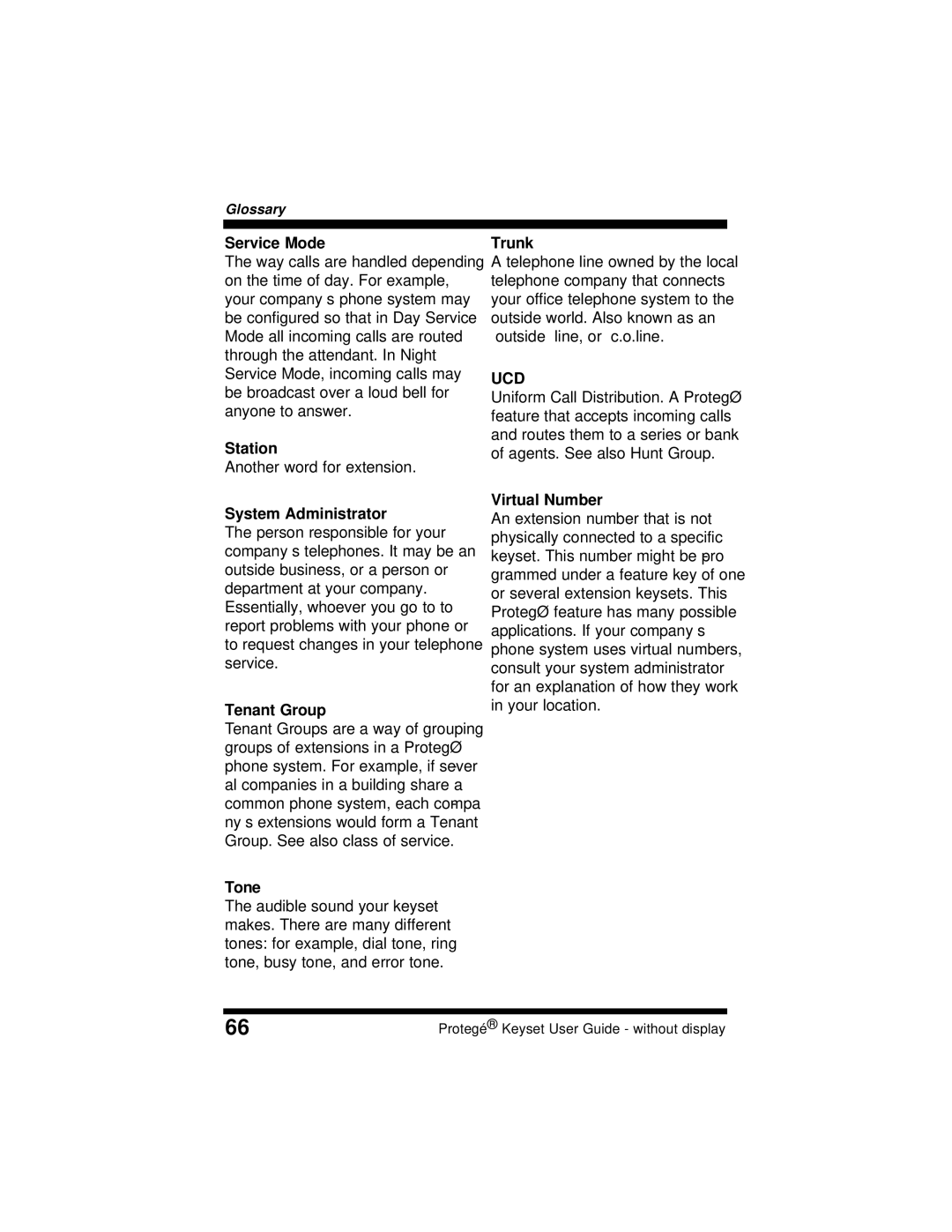
Glossary
Service Mode
The way calls are handled depending on the time of day. For example, your company’s phone system may be configured so that in Day Service Mode all incoming calls are routed through the attendant. In Night Service Mode, incoming calls may be broadcast over a loud bell for anyone to answer.
Station
Another word for extension.
System Administrator
The person responsible for your company’s telephones. It may be an outside business, or a person or department at your company. Essentially, whoever you go to to report problems with your phone or to request changes in your telephone service.
Tenant Group
Tenant Groups are a way of grouping groups of extensions in a Protegé phone system. For example, if sever- al companies in a building share a common phone system, each compa- ny’s extensions would form a Tenant Group. See also class of service.
Tone
The audible sound your keyset makes. There are many different tones: for example, dial tone, ring tone, busy tone, and error tone.
Trunk
A telephone line owned by the local telephone company that connects your office telephone system to the outside world. Also known as an “outside” line, or “c.o.line.”
UCD
Uniform Call Distribution. A Protegé feature that accepts incoming calls and routes them to a series or bank of agents. See also Hunt Group.
Virtual Number
An extension number that is not physically connected to a specific keyset. This number might be pro- grammed under a feature key of one or several extension keysets. This Protegé feature has many possible applications. If your company’s phone system uses virtual numbers, consult your system administrator for an explanation of how they work in your location.
66 | Protegé® Keyset User Guide - without display |
